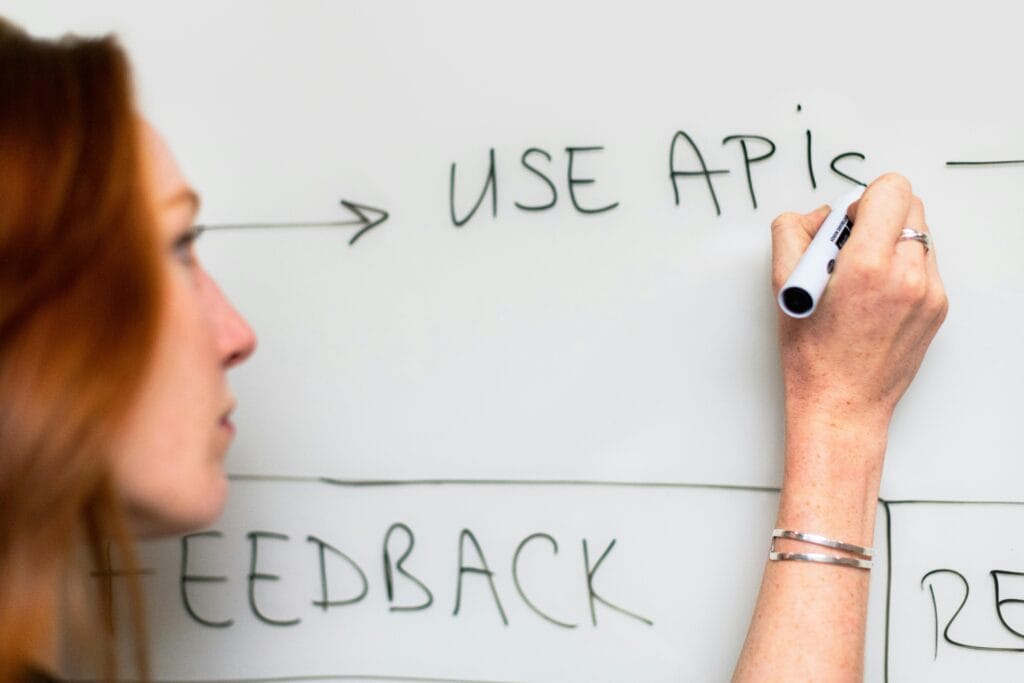There are hundreds of millions of WordPress websites online. While it is a platform known for its flexibility and user-friendliness, it demands more than basic security measures like strong passwords, regular updates, and essential plugins. Just as a simple lock on a door is insufficient, your website is the same. It requires a robust, multi-layered protection system. In today’s cyber landscape, which poses a more significant threat than ever, sophisticated security measures are a must.
At Full Stack Industries, we go beyond the basics, implementing advanced strategies for true peace of mind. Fundamental security is a start, but evolving attacker tactics demand a deeper, strategic approach. Today, we will explore powerful, often-overlooked methods to significantly strengthen your WordPress security.

Beyond Basic Security: Layered Defence
Website security can be thought of as a series of interconnected shields–a range of defence measures linked together to form one unified item. Moving beyond simple measures involves restricting access, concealing sensitive areas, and active monitoring.
- Fortify Your Foundation: Secure core files/directories with file permission hardening to prevent unauthorised changes. Relocate wp-config.php outside the web root to protect database credentials.
- Guard the Gates: Use server-level firewalls to filter traffic and block threats. Enhance this with IP allowlisting for admin access and limiting access to trusted IPs.
- Conceal the Keys: To deter automated brute-force attacks, replace the default login URL (/wp-login.php) with a unique one.
- Double the Lock: Implement two-factor authentication (2FA) for all admin accounts as a crucial second verification step.
- Silence Unnecessary Chatter: Disable XML-RPC functionality to block related attacks and reduce exposure.
- Implement Invisible Shields: Use HTTP security headers (CSP, X-Frame-Options, HSTS) to instruct browsers and prevent various exploits, such as XSS and clickjacking.
- Constant Vigilance: Use tools like Wordfence or custom scripts to monitor file changes and detect and respond to unauthorised modifications in real time.
The Power of the Web Application Firewall (WAF)
A Web Application Firewall (WAF) could be compared to a vigilant security guard for your website, checking visitors before they enter. Just as security is essential for venues, WAFs are a crucial defence layer at the server or DNS level, filtering malicious traffic before it reaches your WordPress site.
Unlike standard security plugins that operate within WordPress, a WAF offers broader protection with key benefits:
- Real-time, Server-Level Protection: It analyses traffic before interacting with your website.
- Zero-Day Threat Mitigation: It can often block new, unpatched attacks by identifying suspicious patterns.
- Dynamic Threat Adaptation: Its rule-based logic updates to address the latest threats.
- Reduced Server Load: Filtering bad requests early improves performance during attacks.
Integrating robust WAF solutions like Cloudflare or Sucuri offers enterprise-grade protection with minimal impact on your site’s speed. Incorporating a WAF into our managed hosting and security plans provides clients with significant peace of mind, knowing they have a robust, proactive defence.
Proactive Protection and Defence
At Full Stack Industries, we don’t wait for breaches; we actively seek weaknesses:
- Scheduled Automated Scans: Using tools like WPScan and Nessus to find known vulnerabilities.
- Manual Code Reviews and Security Audits: Examining custom code for insecure practices.
- Penetration Testing: Simulating attacks to identify exploitable weaknesses (black-box and white-box).
- Third-Party Plugin Reviews: Assessing the security of your plugins.
- Server-Level Vulnerability Assessments: Checking server configurations for weaknesses.
We also provide detailed security reports and remediation plans as part of our maintenance and support packages. This extra insight and recommendation helps to build an even more secure future for your website and organisation.
Looking Ahead: The Future of WordPress Security
The threat landscape evolves, and so must security practices. Full Stack Industries stays ahead with emerging technologies:
- Application-Level Containerisation (Docker): Isolating your WordPress environment.
- Zero Trust Access Policies: Strict verification for all users and devices.
- AI-Driven Anomaly Detection: Identifying unusual behaviour in real time.
- Headless WordPress Architectures: Reducing the attack surface by decoupling the front-end.
- Content Security Policies (CSP): Enhancing protection against script injection.
- CI/CD Pipelines with Automated Security Checks: Integrating security into the development process.
Robust WordPress security requires a layered, proactive approach. Full Stack Industries provides market-leading expertise and advanced solutions to protect your website. Contact us for a security consultation, and let us build your digital fortress.
Defending Against the Deluge: Brute-Force and DDoS Protection
Websites face two incredibly disruptive and common attacks: brute-force attacks and Distributed Denial of Service (DDoS) attacks. Brute-force attacks aim to gain unauthorised access by repeatedly trying different username and password combinations. In contrast, DDoS attacks attempt to overwhelm your server with a flood of traffic, making your website unavailable to legitimate users. At Full Stack Industries, we effectively employ advanced strategies to counter these threats.
Rate Limiting and Geo-blocking
Implementing rate limiting at the server or Content Delivery Network (CDN) level restricts the number of requests that can be made from a specific IP address within a given timeframe. This makes brute-force attacks significantly less effective. Geo-blocking takes this further by blocking traffic from high-risk geographic regions where malicious activity is frequently observed, reducing the overall attack surface.
Two-factor authentication and CAPTCHA on Logins
Two-factor authentication (2FA) adds a critical second layer of security against successful brute-force attempts. Additionally, implementing CAPTCHA (Completely Automated Public Turing test to tell Computers and Humans Apart) on login forms helps to distinguish between legitimate users and automated bots attempting to gain access.
Server-Level Tools like Fail2ban
Fail2ban is a powerful server-level intrusion prevention software that automatically bans IP addresses that show malicious signs, such as repeated failed login attempts. By monitoring server logs and identifying patterns of abuse, Fail2ban proactively blocks these problematic IPs, further strengthening your defences against brute-force attacks.
CDN Providers with DDoS Protection
Leading CDN providers like Cloudflare or Bunny.net offer robust built-in DDoS protection. Their globally distributed networks are designed to absorb and mitigate large-scale traffic surges, preventing malicious attempts to overwhelm your server and ensuring your website remains online and accessible even during an attack.
Regular Analysis of Access Logs
Continuously monitoring and analysing your website’s access logs can reveal patterns of suspicious activity that might indicate a brute-force or DDoS attack in progress. We can proactively block problematic IP ranges and take other necessary countermeasures by identifying these patterns early.
Login Throttling and Account Lockouts
Implementing login throttling limits the number of login attempts allowed within a specific timeframe, further hindering brute-force attacks. Account lockouts automatically deactivate user accounts after a certain number of failed login attempts, preventing attackers from endlessly trying to guess passwords. These measures are often part of our custom WordPress security stack.
Vulnerability Scanning and Penetration Testing
Waiting for a security breach to happen before taking action is not a viable strategy. Earlier, we touched on the importance of proactive protection and defence. We will now explore that in more depth, as we believe in a forward-thinking approach to security. We incorporate regular vulnerability scanning and penetration testing to identify and address potential weaknesses before they can be exploited.
As part of our service, we provide clients with detailed security reports outlining any identified vulnerabilities and offer clear and actionable remediation plans to address these weaknesses effectively.

Final Thoughts
Securing your WordPress website in today’s digital world is not a task to be taken lightly. It requires a comprehensive, multi-layered approach that goes beyond basic security measures. By implementing advanced strategies like file permission hardening, WAFs, robust brute-force and DDoS protection, and proactive vulnerability management, you can significantly reduce your risk of falling victim to cyber threats.
At Full Stack Industries, we are passionate about providing our clients with market-leading expertise and the most effective WordPress security solutions. We understand that your website’s security is paramount to your business’s success, and we are committed to implementing these advanced protection strategies to safeguard your valuable online presence.
Ready to enhance your WordPress security? Contact us today for a comprehensive security consultation and discover how Full Stack Industries can transform your website into a truly safe and secure space.






